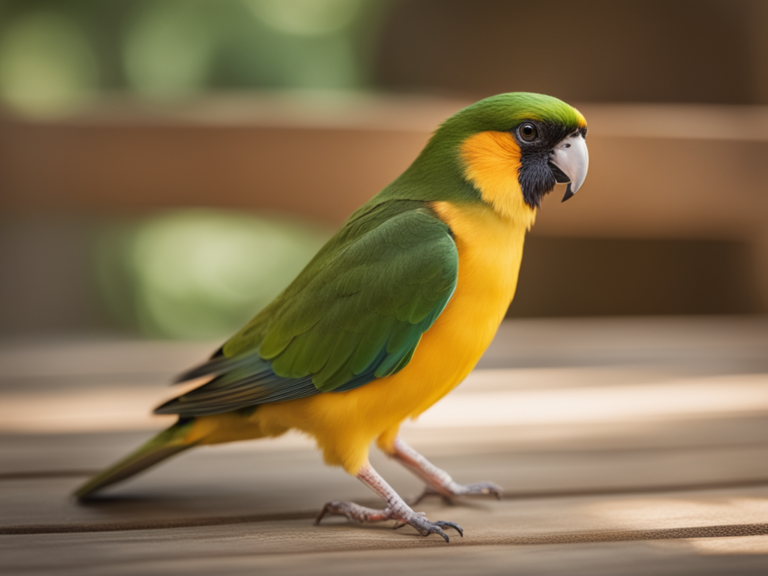Points to Consider Before Declawing Your Cat

Points to Consider Before Declawing Your Cat, take a moment to consider a few key points. Declawing, a surgical procedure that involves the amputation of a cat’s claws, can have significant implications for their physical and emotional well-being. But what are the risks involved? How might declawing impact your cat’s behavior? Are there alternatives that can be explored? By exploring these important considerations, you can ensure that you make an informed decision that prioritizes your cat’s welfare.
Understanding the Declawing Procedure
To understand the declawing procedure, it is important to be aware that it involves the surgical removal of a cat’s claws, making it an invasive process. Declawing cats is a surgical procedure that is done for various reasons, such as preventing scratching damage to furniture or protecting family members from potential harm. During the procedure, the veterinarian will use a scalpel or laser to remove the claws at the first joint, where the bone is located. This ensures that the entire claw is removed.
After the declawing procedure, it is crucial to provide proper post-operative care for your cat. This includes keeping them indoors to prevent infection and monitoring their behavior for any signs of discomfort or pain. The recovery time for declawing can vary, but most cats are fully recovered within two weeks. It is important to note that the earlier the procedure is performed in a cat’s life, the quicker the recovery time. After one year of age, the recovery time tends to increase.
While declawing can provide some benefits, it is important to consider the potential complications. These can include bleeding, infection, pain, and in rare cases, the claws growing back. However, it is worth mentioning that laser declawing has been found to reduce the risk of complications and shorten the recovery time compared to traditional declawing methods.
Risks and Potential Complications
When considering declawing your cat, it’s important to be aware of the health risks involved and potential complications that can arise post-surgery. These can include bleeding, infection, pain, and in rare cases, the claws growing back. Although laser declawing reduces the risk of complications and shortens recovery time, it’s crucial to understand that declawed cats may experience personality shifts, biting behavior, pain, and mobility issues. It is essential to consult with a veterinarian before deciding to declaw and explore alternative options to ensure the well-being of your cat.
Health Risks Involved
Potential complications and risks are associated with declawing your cat, including bleeding, infection, pain, and even rare cases of claws growing back. Bleeding is common during and after the procedure, but it can usually be controlled with proper care. Infection can occur if the surgical site is not kept clean and monitored. Pain is also a concern, as declawing involves the removal of the last bone of each toe. Although pain medication is usually prescribed, some cats may still experience discomfort.
Additionally, there have been rare cases where the claws have regrown after declawing, requiring further intervention. It is important to understand these health risks involved and consider them carefully before making the decision to declaw your cat. Consulting with a veterinarian is crucial in order to fully understand the potential complications and make an informed decision.
Complications Post-Surgery
After considering the potential health risks involved in declawing your cat, it is important to be aware of the complications that can arise post-surgery. Complications may include bleeding and infection. It is also possible for pain to be a potential complication following the declawing procedure. Although rare, there have been instances of claws growing back after the surgery.
To reduce the risk of complications, laser declawing is an option to consider. Recovery time can vary, but generally, it takes up to two weeks for full recovery. During this time, proper pain management is crucial to ensure your cat’s comfort. It is important to follow your veterinarian’s instructions for post-surgery care and provide a calm and stress-free environment for your cat’s recovery.
Impact on Your Cat’s Behavior and Well-Being
Declawing your cat can have significant implications on its behavior and overall well-being. One of the most common personality changes observed in declawed cats is an increase in aggression. This may be due to the fact that declawing can cause chronic pain and discomfort, leading to heightened irritability. Cats that were once friendly and affectionate may become more prone to biting or scratching as a means of self-defense.
Furthermore, declawing can also affect your cat’s scratching behavior. Scratching is a natural instinct for cats and serves several important purposes, including marking territory and maintaining their claws. When cats are declawed, they no longer can engage in this natural behavior. This can result in frustration and a loss of their primary means of communication.
In addition to these behavioral changes, declawing can also have physical consequences for your cat’s well-being. The removal of the claws compromises their ability to defend themselves against potential threats. It also hampers their climbing abilities, making it difficult for them to escape danger or seek refuge in high places. Declawed cats may struggle to maintain balance and may experience long-term discomfort and insecurity.
It is important to consider these potential impacts on your cat’s behavior and well-being before opting for declawing. It is always recommended to explore alternative options, such as providing suitable scratching posts and regularly trimming your cat’s claws, to manage scratching behavior. By understanding and addressing the underlying reasons behind scratching, you can help your cat maintain its natural instincts while also preserving its behavior and overall well-being.
Legal Considerations and Where Declawing Is Prohibited
Cat declawing is prohibited in several countries and cities around the world, including Australia, the United Kingdom, Brazil, New Zealand, Israel, and most of the European Union. Understanding the legal considerations and where declawing is prohibited is crucial before making a decision about declawing your cat.
In Australia, declawing is considered an act of animal cruelty and is therefore illegal. The same goes for the United Kingdom, where declawing is seen as unnecessary and painful. Brazil, New Zealand, and Israel also have laws that prohibit declawing, as they believe it is a cruel and unnecessary procedure.
In most of the European Union, declawing is banned under animal welfare laws. The EU considers declawing to be a form of mutilation that causes unnecessary pain and suffering to cats. It is important to note that individual countries within the EU may have specific regulations regarding declawing, so it is advisable to research the laws of the specific country you reside in.
In Canada, declawing is legal on the federal level, but several provinces have taken a stand against the practice. These provinces include British Columbia, Nova Scotia, Prince Edward Island, and Newfoundland and Labrador, where declawing is prohibited unless deemed medically necessary.
Within the United States, several cities have also banned declawing. West Hollywood was the first city to do so, followed by other cities such as San Francisco, Los Angeles, and Denver. Additionally, New York became the first state to ban declawing in 2019, with Maryland following suit in 2022.
Alternatives to Declawing
Consider these alternatives to declawing your cat to maintain their claws while protecting your furniture and skin. Instead of resorting to such an invasive procedure, there are several options available to ensure the well-being of your feline friend and the preservation of your belongings.
Regularly trimming your cat’s claws is one effective alternative to declawing. By keeping their claws at an appropriate length, you can prevent them from becoming too sharp and reduce the risk of damage to furniture and accidental scratches. However, it is important to note that not all cats are tolerant of having their claws trimmed, so it may take some patience and practice to get them accustomed to the process.
Another alternative is the use of Soft Paws, small plastic nail caps that are attached to your cat’s claws. These caps are safe and non-toxic, providing a protective barrier between their claws and your furniture or skin. They are easy to apply and typically last for around six weeks before needing to be replaced.
Investing in scratch-resistant furniture is also a sensible option. There are various materials available that are designed to withstand scratching, such as microfiber or leather. These options provide a durable alternative that can withstand the natural instincts of your cat without sustaining damage.
Additionally, providing your cat with a scratching post is crucial. Cats have a natural need to scratch, and a designated scratching post can redirect their behavior away from your furniture. Opt for a sturdy and tall scratching post that is covered in a material that appeals to your cat, such as sisal or cardboard. Regularly encourage and reward your cat for using the scratching post to reinforce the desired behavior.
If your cat continues to exhibit undesirable scratching habits, it is important to correct their behavior and use cat deterrents to discourage them from scratching furniture. This can include using deterrent sprays, double-sided tape, or placing aluminum foil on surfaces that you want to protect.
Proper Cat Claw Trimming Techniques
Are you unsure about the proper techniques for trimming your cat’s claws? Proper cat claw trimming techniques are essential for maintaining your cat’s claws and avoiding the need for declawing. By following these techniques, you can ensure that your cat’s claws are kept at an appropriate length and prevent any discomfort or pain.
Firstly, it is important to use specialized cat nail clippers when trimming your cat’s claws. These clippers are designed specifically for cats and provide a clean cut. Make sure to avoid cutting into the quick, which is the sensitive tissue inside the claw. Cutting into the quick can cause bleeding and pain, so it is important to be cautious.
Gradually introducing your cat to nail trimming from a young age can help them become accustomed to the process. Start by gently touching and handling your cat’s paws, and then move on to clipping one or two claws at a time. By gradually building up their tolerance, your cat will be more comfortable with nail trimming.
When trimming your cat’s claws, it is important to identify the quick, especially in translucent claws. The quick appears as a pink area inside the claw. Avoid cutting into the quick to prevent any pain or bleeding. If you are unsure, it is better to trim a small amount at a time to be on the safe side.
Utilize positive reinforcement and treats during and after the trimming to create a positive association. This will help your cat associate nail trimming with positive experiences. Regularly inspect and trim the claws to maintain proper length and prevent overgrowth. By implementing these proper cat claw trimming techniques, you can keep your cat’s claws in good condition and avoid the need for declawing.
Providing Appropriate Scratching Surfaces
To provide appropriate scratching surfaces for your cat, consider options such as scratching posts, which can redirect their natural scratching behavior. Make sure the posts are sturdy, tall, and stable to accommodate your cat’s full body stretch. Additionally, place the posts in various locations around your home to encourage your cat to use them instead of damaging your furniture.
Scratching Post Options
For optimal scratching post options, provide a variety of surfaces that cater to your cat’s preferences. Cats have different preferences when it comes to scratching surfaces, so it’s important to offer a range of options. Consider both vertical and horizontal scratching posts to mimic different surfaces, such as trees or the ground.
Make sure the scratching posts you choose are sturdy and stable to prevent tipping over during use. It’s also a good idea to incorporate different materials like sisal, cardboard, and wood to cater to your cat’s scratching needs. Regularly observe your cat’s scratching behavior and adjust the placement and type of scratching posts accordingly. By providing appropriate scratching surfaces, you can help prevent the need for cat declawing.
Training Your Cat
Introduce a variety of scratching posts and pads to determine your cat’s preferred surfaces. Cats have individual preferences when it comes to scratching surfaces, so it’s important to provide options that cater to their needs. Place the scratching surfaces near areas where your cat spends time, such as by windows or near their favorite resting spots. This will encourage them to use the scratching posts instead of your furniture. To further entice your cat, use toys and treats to attract them to the surface.
You can also consider using catnip or pheromone sprays on the scratching posts to make them more appealing. Additionally, regularly trimming your cat’s claws can help minimize the need for excessive scratching. By providing appropriate scratching surfaces and training your cat, you can protect your furniture from damage while keeping your feline friend happy and satisfied.
Redirecting Unwanted Scratching
Consider providing designated scratching posts and surfaces to redirect your cat’s scratching behavior. Cats have a natural instinct to scratch, so it’s important to give them appropriate outlets for this behavior. Scratching posts come in various shapes and sizes, including vertical posts, horizontal boards, and even cat trees. Experiment with different textures like sisal, carpet, or cardboard to see what your cat prefers. Introducing Soft Paws or nail caps can also help protect your furniture and discourage unwanted scratching. These caps are glued onto your cat’s claws and are safe and comfortable for them to wear.
Additionally, investing in scratch-resistant furniture can deter cats from scratching inappropriate surfaces. Regular nail trims can prevent overgrowth and minimize the need for scratching. If your cat continues to scratch furniture, correct the behavior and consider using cat deterrents to effectively discourage them from scratching.
Managing and Redirecting Unwanted Scratching Behavior
To effectively manage and redirect your cat’s unwanted scratching behavior, encourage the use of a scratching post as a suitable alternative to furniture. Scratching is a natural behavior for cats, so it’s important to provide appropriate outlets for this instinct. Place the scratching post in a location where your cat spends a lot of time, such as near their favorite resting spot or in a commonly used area of the house. Make the post enticing by rubbing it with catnip or using a pheromone spray to attract your cat’s attention.
When you notice your cat attempting to scratch furniture, gently redirect their attention to the scratching post. You can do this by using a toy or a treat to entice them towards the post. Positive reinforcement is key here – reward your cat with praise and treats when they use the scratching post instead of the furniture.
In addition to encouraging the use of a scratching post, it’s important to correct bad behavior and discourage scratching furniture. Use cat deterrents like double-sided tape or aluminum foil on the furniture to make it less appealing for scratching. You can also try using a motion-activated spray deterrent that emits a harmless burst of air to startle your cat away from the furniture.
Regular nail trims are essential to managing unwanted scratching behavior. By keeping your cat’s claws short, you can minimize the damage they can do to furniture. If you’re concerned about scratches on your skin, you can consider using Soft Paws, small plastic nail caps that can be applied to your cat’s claws to protect both furniture and skin.
Investing in scratch-resistant furniture can also be a long-term solution to managing unwanted scratching behavior. Look for furniture made from materials like microfiber or leather, which are less prone to scratching. By providing your cat with appropriate outlets for scratching and using deterrents, you can effectively manage and redirect their unwanted scratching behavior without resorting to declawing.
Nail Caps as a Temporary Solution
If you’re looking for an alternative to declawing your cat, nail caps can be a temporary solution. These small plastic caps are glued to your cat’s claws and need to be replaced every four to six weeks. While they can prevent scratching damage to furniture and skin, they may not be as effective as natural claws and could still cause difficulties for your cat during daily activities.
Temporary Solution: Nail Caps
Nail caps offer a temporary solution for preventing scratching damage in cats. These soft paws, also known as nail caps, are designed to cover the cat’s claws, preventing them from causing damage to furniture, carpets, and other surfaces. The caps need to be replaced every four to six weeks as the cat’s nails grow. Applying the nail caps involves using a nontoxic glue that ensures safe application.
While nail caps may not be as effective as natural claws, they can help reduce scratching damage. However, it is important to note that nail caps are a temporary solution and should be seen as such. They can be used while exploring other alternatives or implementing behavioral interventions to address the underlying cause of the scratching behavior.
Alternatives to Declawing
Consider using nail caps as a temporary solution for preventing scratching damage in your cat. Rather than resorting to declawing, there are alternative methods that can be more beneficial for both you and your feline friend. One such method is using nail caps, also known as Soft Paws. Nail caps are small, vinyl covers that can be applied to your cat’s claws to blunt them and prevent damage caused by scratching.
They are available in various sizes and colors and can be easily applied at home. Nail caps are a humane option that allows your cat to continue their natural scratching behavior without causing harm to your furniture or other household items. Additionally, regularly trimming your cat’s nails from a young age and providing them with a suitable scratching post can also help redirect their scratching behavior.
Making an Informed Decision for Your Cat’s Welfare
To make an informed decision for your cat’s welfare, it is essential to thoroughly understand the physical implications, legal and ethical considerations, and alternatives to declawing. When considering the physical implications, it is important to note that declawing compromises a cat’s defense abilities. Claws are an essential part of a cat’s natural behavior, allowing them to climb, scratch, and defend themselves. Declawing can also lead to an increased risk of infection and discomfort for your furry friend.
Legal and ethical considerations are also crucial to take into account before declawing. In several countries, declawing is actually prohibited due to its perceived cruelty. Even within countries where it is still allowed, many veterinarians criticize the procedure as unnecessary and inhumane. It is important to consider these viewpoints and understand the potential ethical concerns associated with declawing.
Exploring alternatives to declawing is another important step in making an informed decision. One such alternative is the application of blunt, vinyl nail caps. While these caps require periodic replacement and do not provide the same effectiveness as natural claws, they offer a way to protect furniture while still allowing your cat to express natural behaviors.
Additionally, it is important to consider the implications of an indoor lifestyle for declawed cats. After declawing, it is recommended to keep your cat strictly indoors to protect them from potential dangers. It is also worth noting that declawing surgery is not recommended for adult cats, as it can be more painful and have a longer recovery period.
To ensure the overall welfare of your cat, it is important to be prepared for emergencies. This includes knowing the signs of distress, having a first aid kit on hand, and important phone numbers readily available. By considering these factors before declawing, you can make an informed decision that prioritizes your cat’s welfare.
Points to Consider Before Declawing Your Cat Frequently Asked Questions
What to Do Before Declawing a Cat?
Before declawing your cat, make sure to thoroughly research the procedure and consider the potential implications. Explore alternative options and consult with a veterinarian for guidance. It’s important to be informed and prepared.
Under What Circumstances Would You Have the Cat Declawed?
If the cat’s scratching behavior is a danger to you or the cat’s health, and all alternatives have been exhausted, you might consider declawing. However, it’s important to consult a vet and understand the long-term effects.
Is It OK to Declaw an Indoor Cat?
It’s important to consider ethical concerns and explore alternatives before deciding to declaw your indoor cat. There are alternatives like regular nail trimming and scratch-resistant furniture that can address the issue without resorting to declawing.
Are There Any Good Reasons to Declaw a Cat?
There are alternatives to declawing a cat that should be considered before making a decision. Declawing can have long-term effects on a cat’s well-being, such as personality shifts and behavior changes.
Points to Consider Before Declawing Your Cat Conclusion
In conclusion, before deciding to declaw your cat, it is crucial to consider the potential risks and complications involved in the surgical procedure. It is important to prioritize your cat’s physical and emotional well-being by exploring alternatives such as regular nail trimming and providing appropriate scratching surfaces. By consulting with a veterinarian and being well-informed, you can make an informed decision that promotes your cat’s welfare.








